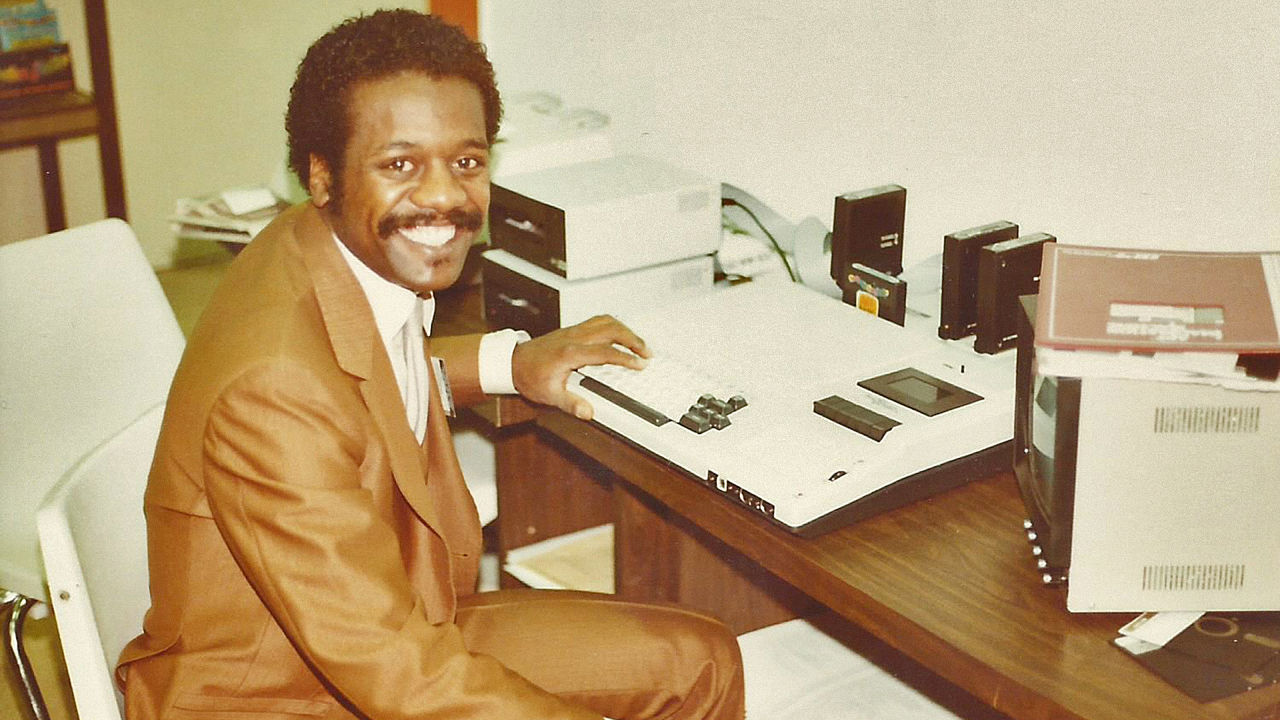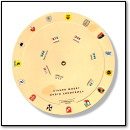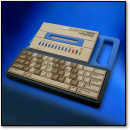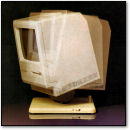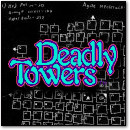Archive for the 'Computer History' Category
[ Retro Scan ] Voice It VT-40 Digital Recorder
Wednesday, October 19th, 2016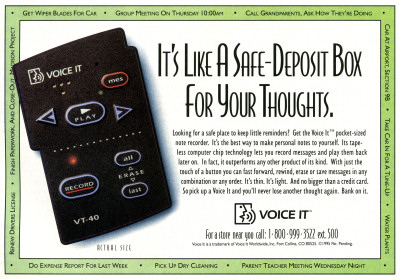 A 40-second safe deposit box, mind you
A 40-second safe deposit box, mind you
In 1994 and 1995, several manufacturers released the first batch of solid state digital voice recorders. All of them used newly available flash memory chips to record audio notes digitally without the need for magnetic tape.
This VT-40 recorder from Voice It was among the first, launching around May 1995 in the US. It could record 40 seconds of audio in 10 audio clips — all that for a mere $69.99 MSRP. Unlike some competing units, the audio clips recorded by the VT-40 were stuck on the recording device and could not be digitally transferred to another medium or a computer. Around the same time, Voice It also launched a higher-capacity unit, the VT-75, which could record 75 seconds of audio.
Despite the convenience of having a small, thin audio recorder with no moving parts, the low capacity of these first generation flash recorders made them more of a novelty than anything else. I remember around 1996 when my dad brought home a keychain digital audio recorder that could record about 30 seconds of audio. It was fun to play with — and a marvel of technology at the time — but it didn’t have enough capacity for useful note taking.
Of course, today we have endless solid state audio recording capacity through removable flash cards, etc., and digital note recorders are the mainstream (and have been for at least a decade). But it’s neat to look back on how it all started.
Discussion Topic: When was the first time you used a solid-state or digital audio recorder? Tell us about it.
Ed Smith and the Imagination Machine
Friday, September 2nd, 2016Just today, FastCompany published my in-depth history of Ed Smith and APF Electronics.
APF was responsible for several video game consoles in the 1970s (like the MP1000) and a personal computer called The Imagination Machine. Ed Smith was the primary electronics designer for the MP1000, and he has quite a story to tell.
I think you guys will really enjoy the piece.
Thirty-seven years ago, New York-based APF Electronics, Inc. released The Imagination Machine, a hybrid video game console and personal computer designed to make a consumer’s first experience with computing as painless and inexpensive as possible.
APF’s playful computer (and its game console, the MP1000) never rivaled the impact of products from Apple or Atari, but they remain historically important because of the man who cocreated them: Ed Smith, one of the first African-American electronics engineers in the video game industry. During a time when black Americans struggled for social justice, Manhattan-based APF hired Smith to design the core element of its future electronics business.
What it took to get there, for both APF and Smith, is a story worth recounting—and one that, until now, has never been told in full.
[ Retro Scan ] HP 95LX
Tuesday, August 30th, 2016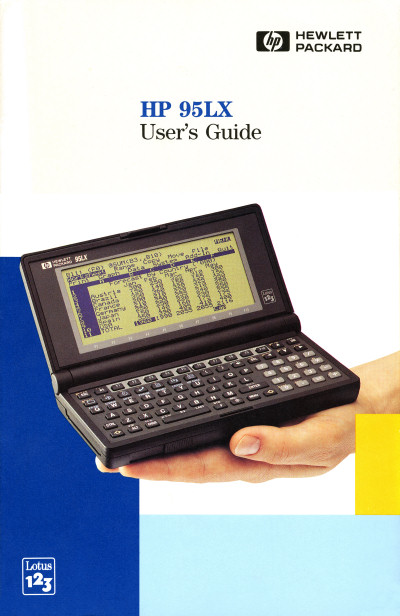 HP-95LX: Like a computer-shaped cookie that you can’t eat
HP-95LX: Like a computer-shaped cookie that you can’t eat
In case you didn’t know, the HP 95LX is a small, portable IBM PC compatible machine running a full version of MS-DOS that ran off of two AA batteries. It marked the beginning of HP’s palmtop computer line, which I wrote about recently in a slideshow for PCMag.com.
The HP 95LX is special to me in particular because I’ve had one for over 20 years now. My dad bought the machine slightly-used from a friend not long after it came out. After fiddling around with it for a while, he gave it to me, and by 1993, I had it in my collection.
Using an RS-232 serial cable my dad built for me, I managed to transfer some MS-DOS programs to it (a few text-mode games mostly, and a few HP 95LX apps I downloaded from CompuServe), that I remember taking to school and using once or twice just for kicks. I also used that serial cable to hook the 95LX to a modem so I could call BBSes with it.
The worst thing about the 95LX — aside from its 1/4 CGA screen that doesn’t let you run many MS-DOS apps — is that if you don’t have a plug-in memory card, you lose all your saved data on the RAM disk if it runs out of batteries. Sure, it has a backup coin cell battery (or maybe two), but if that runs out, you’re out of luck. The PC Card-like memory cards cost a lot of money back in the 1990s, so I never had one until recently.
Still, it’s an amazing little machine. Very capable — if you have the patience to use it. A few years later, HP got everything right with the 200LX, which is still a popular portable MS-DOS machine among certain diehards today.
Discussion Topic: Did you own a palmtop PC in the 1990s? Tell us about it.
VC&G Review: Areaware Windows Solitaire Cards
Friday, August 26th, 2016No, you’re not seeing things. These are actual physical playing cards designed to look just like the classic Microsoft Solitaire card faces — the same faces Microsoft used for its Windows-based card games between 1990 and 2007.
Just this month, home decor vendor Areaware began selling the cards, which were produced with the help of the cards’ original graphic designer, Susan Kare (and with the blessings/license of Microsoft).
Kare is best known as the designer of the original Macintosh fonts, icons, and interface elements. She also created most of the icons for Windows 3.0, which was the first version of Windows to ship with Microsoft Solitaire. Along the way, she ended up designing the Solitaire cards too.
Excited as I always am for computer nostalgia, I eagerly bought a pack of these new cards as soon as they became available, and I put them through the ultimate test: a game of real desktop Klondike solitaire.
[ Continue reading VC&G Review: Areaware Windows Solitaire Cards » ]
[ Retro Scan ] My First Website Setup Email
Tuesday, August 16th, 2016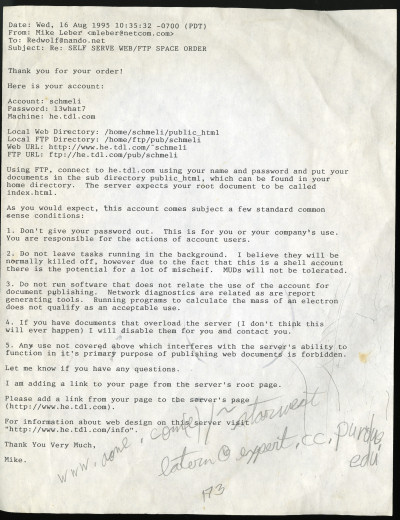 “Don’t give your password out.” Oops!
“Don’t give your password out.” Oops!
21 years ago today, I received this email from Mike Leber of Hurricane Electric, a company that rented out web hosting space, among other services (in fact, they’re still in business).
Since it was a setup email describing how to utilize my first-ever website space, it was important enough for me to print out on my nifty Canon BubbleJet printer. That’s what you see scanned here. I probably have the original email too in electronic form sitting around somewhere.
You’ll also notice that I wrote down a convoluted URL (in which I wrote a strange “(e)” after the “.com” — perhaps I was confused), which turns out to have one pointed to a ghost hunting website. I was big into that stuff back then (I was 14 at the time, if that explains anything). The Purdue email address scrawled in pencil probably has something to do with that as well.
Reading through this old email is fun today. System resources were relatively scarce back then, so the rules about what you could do with your minuscule web space were pretty strict. I particularly enjoy the “MUDS will not be tolerated” line. And the thing about calculating the mass of an electron.
Late last year, I wrote a big article about the process of creating this website (which I called “The Schmeli Caborgan”) for FastCompany. I also wrote about my first ISP, Nando.Net, in a Retro Scan post earlier this year.
Discussion Topic: When did you set up your first website?
The IBM PC Turns 35
Friday, August 12th, 2016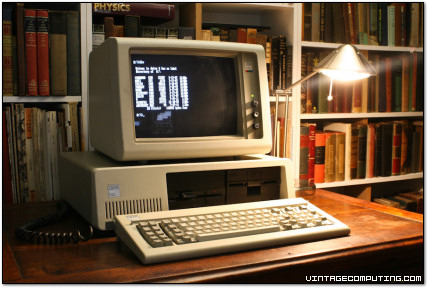
35 years ago today, IBM launched the IBM Personal Computer — the first-ever IBM PC. While it was simply called the “IBM Personal Computer” back then, we now know it more commonly by its model number, 5150.
PCWorld recently asked me to do something to celebrate this anniversary, so just a few days ago, I took apart my personal IBM PC 5150 and documented the process on my workbench. And back in 2011, I wrote some other articles about the IBM PC on the occasion of the machine’s 30th anniversary.
In fact, I’ve done a lot of coverage of the IBM PC over the years, so I thought you guys might enjoy seeing a collection of all of them in one place. Here we go.
Features
- Inside the IBM PC 5150 (PCWorld, 2016)
I examine and take apart IBM’s first PC on my trusty workbench - Can You Do Real Work With the 30-Year-Old IBM 5150? (PCWorld, 2011)
I spent a week with the IBM PC using it for modern work like word processing, graphics, and even Internet tasks - IBM PC Oddities (Technologizer, 2011)
Neat and unusual trivia, accessories, cultural moments surrounding the IBM PC - Ten Greatest MS-DOS Games of All Time (PC World, 2011)
Exactly what it sounds like — the best IBM PC games that ran in DOS. - Classic PCs vs. New PCs: Their True Cost (Technologizer, 2009)
Wherein I compared the IBM PC (among other computers) to modern cost-equivalents when adjusted for inflation - Inside the World’s Greatest Keyboard (PCWorld, 2008)
I took apart an IBM PC AT-era (1984) Model M keyboard, which set the standard for all PC keyboards
IBM PC Retro Scans of the Week
- Disemboweled IBM PC 5150 (2016)
- The Official IBM PC Desk (2012)
- My Own IBM Computer (2011)
- The IBM PC Kid (2010)
- IBM Taught Me How to Read (2010)
- Stunning IBM PC Paper Art (2008)
- Presenting the IBM of Personal Computers (2006)
IBM PC-Related VC&G Posts
- Origins of the ASCII Smiley Character: An Email Exchange With Dr. David Bradley (2015)
- The Beleaguered IBM PC in History (2011)
- IBM PC 30th Anniversary Extravaganza (2011)
- A Few Thoughts on the IBM PC’s Birthday (2011)
There may be more lurking out there, but that’s quite a bit of reading if you’re interested in the IBM PC.
[ Retro Scan ] Disemboweled IBM PC 5150
Thursday, June 30th, 2016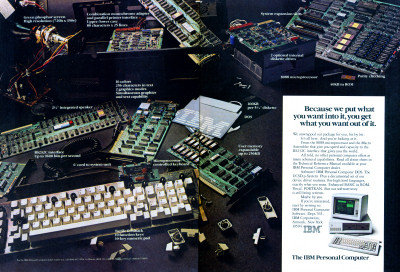 Is somebody gonna clean this mess up?
Is somebody gonna clean this mess up?
Here we have a biggole two-page IBM PC 5150 advertisement spread from 1982 — published not long after the launch of IBM’s first PC in August 1981.
It looks like IBM is trying to play up the bare-metal technical angle for Byte readers, who likely were building their own PCs from kit parts just a few years prior (and some still were doing it then).
The result, quite frankly, is a huge mess (looks like my workbench). And the advertisement didn’t come out too well in the magazine print run, which makes the image dark and muddy. It’s not my fault, I swear!
I particularly like the phrase “the RS232C interface that gives you the world” in the advertising copy. It implies using the serial port for networking — that is, in connecting to remote computers. It’s funny because back then, that statement was a hyperbolic boast that was not meant literally. Online services were limited to a teeny-tiny fraction of the world population and their capabilities were limited. Today, networking does really give you the world.
Discussion Topic: Have you ever broken a computer while you were taking it apart? Tell us about it.
[ Newsbits ] June 29, 2016
Wednesday, June 29th, 2016

I’ve recently received a big influx of news, announcements, and press releases, so I thought I’d bring Newsbits out of cold storage and use it to share everything all at once.
Recent News
It’s wonderful to see this stuff preserved, as always
A group of former employees from the Minnesota Educational Computing Corporation (MECC) recently donated an extensive collection of materials to The Strong museum documenting the history of the pioneering company from 1973 to 1996. The collection includes hundreds of pieces of software, internal documents, and press clippings.
Brock Kyle recently let me know that his essential Apple info site is turning 20 this Saturday. Quite an accomplistment!
Established in 1996, EveryMac.com is the complete guide to every Mac, iPod, iPhone, iPad and Mac clone in the world, with technical specs, configuration details, system identifiers, performance benchmarks, and global pricing info.
They’ve assembled some incredible footage so far; would be a shame to see this disappear
This 100 minutes long documentary about the Atari story will feature a list of unreleased interviews with the key people of these events, including a very rare one with Warner VP Manny Gerard and a unique one with Atari CEO Ray Kassar, the man held responsible for Atari success and the video game industry crash at the same time, who never appeared in a documentary before.
Quite a project
My name is Gaming Jay. I’m a retro gamer who started a challenge this past year to play through a book called ‘1001 Video Games You Must Play Before You Die.’ Each week I’ve been playing 2 games and recording my gaming sessions and uploading them to YouTube. I have also recently developed a new website to document my journey with written summaries to supplement my YouTube videos.
Neat iOS camera app that simulates vintage graphics
I created Famicam64, an 8bit RetroGaming style Camera app. Famicam64 lets you take photos with 40+ real-time filters that emulate the nostalgic look of retro computers (and games) of the 80s and 90s. CGA, EGA, VGA, Hercules and old PC graphic modes are all there, as well as style emulating home computers and handheld consoles (C64, Spectrum or Gameboy etc. etc.).
It’s a niche subject, but a story worth telling
The Secret History of Mac Gaming is the story of those communities and the game developers who survived and thrived in an ecosystem that was serially ignored by the outside world. The work draws on archive materials as well as 60+ new interviews with key figures from Mac gaming’s past.
Cool Links
Very, very creative electronics project from Star Simpson
Forrest M. Mims III is a trusted name in the electronics world for good reason: his charming and engaging texts have drawn millions of people into the world of electronics for the first time. I am bringing some of those hand-drawn circuits projects to life by creating an exquisitely designed series of finely crafted and highly detailed boards. These are the Circuit Classics.
VC&G reader Ben Winchester built a NES-shaped coffee table; it’s up for sale on Etsy.com
I wanted to show this to you because I feel this piece is truly unique and original to me. I got my start by replicating your NES DVD player and then moving on to putting my own twist on the NES coffee table, and now I think I have created an original design.
Bob Alexander turns Tinney’s train illustration into a photo composition
I’ve just completed an art project that was inspired by Robert Tinney’s painting “Computer Engineering” for Byte magazine. That’s the one with a train chugging around a printed circuit board. I made a printed circuit board that resembled the one in the painting, photographed it, and Photoshopped a picture of an HO scale model train onto it.
[ Retro Scan ] VREAM Virtual Reality Development System
Tuesday, May 10th, 2016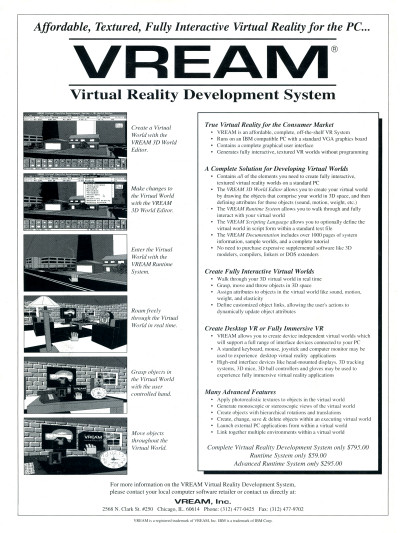 If it’s as easy to use as it is to pronounce, then I want it.
If it’s as easy to use as it is to pronounce, then I want it.
I was so excited about PC-based virtual reality back in the 1990s. I remember reading the early Web (circa 1995-96) about how people would build their own HMD goggles and modify a NES Power Glove to use as input for certain VR software packages. I wanted to do that too, but never did.
I also played some shareware 3D world demos where you could walk around a polygonal-3D town (and prior to that, I had vivid dreams about jumping into a 3D computer-generated world that looked like the Money for Nothing Dire Straits video).
Apparently, VREAM made some of those 1990s VR demos possible. It was a PC-based virtual reality development system created by VREAM, Inc. of Chicago. I have never used it, but it looks neat.
This ad comes from the back cover of an issue of PCVR magazine that I got from a relative. You can read more about that in this Retro Scan from 2014.
Discussion Topic: Did you use any 3D modeling software in the 1990s? Tell us about it.
—
See Also:
- Low-End Virtual Reality (Retro Scan, 2014)
- Retro Scan of the Week Special Edition: “At Last! Reality For the Masses!” (Retro Scan, 2007)
- The History of Stereoscopic 3D Gaming (PC World, 2011)

